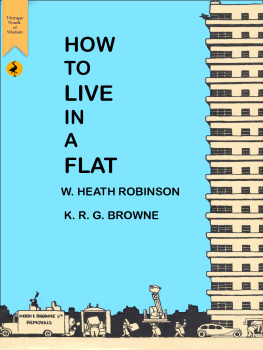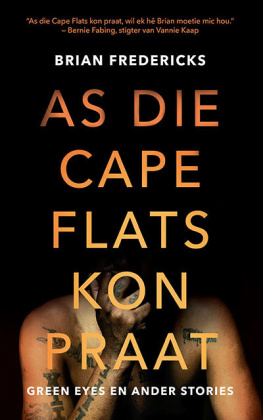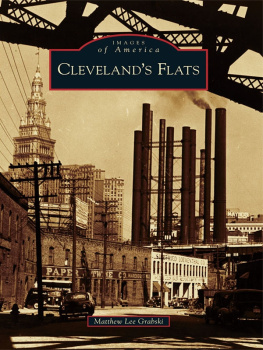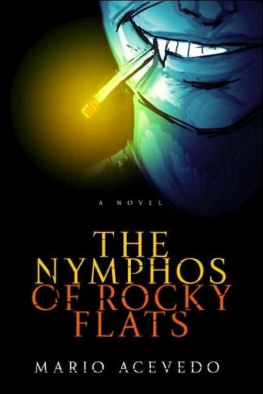William Landay - Mission Flats
Here you can read online William Landay - Mission Flats full text of the book (entire story) in english for free. Download pdf and epub, get meaning, cover and reviews about this ebook. genre: Detective and thriller. Description of the work, (preface) as well as reviews are available. Best literature library LitArk.com created for fans of good reading and offers a wide selection of genres:
Romance novel
Science fiction
Adventure
Detective
Science
History
Home and family
Prose
Art
Politics
Computer
Non-fiction
Religion
Business
Children
Humor
Choose a favorite category and find really read worthwhile books. Enjoy immersion in the world of imagination, feel the emotions of the characters or learn something new for yourself, make an fascinating discovery.

- Book:Mission Flats
- Author:
- Genre:
- Rating:3 / 5
- Favourites:Add to favourites
- Your mark:
- 60
- 1
- 2
- 3
- 4
- 5
Mission Flats: summary, description and annotation
We offer to read an annotation, description, summary or preface (depends on what the author of the book "Mission Flats" wrote himself). If you haven't found the necessary information about the book — write in the comments, we will try to find it.
Mission Flats — read online for free the complete book (whole text) full work
Below is the text of the book, divided by pages. System saving the place of the last page read, allows you to conveniently read the book "Mission Flats" online for free, without having to search again every time where you left off. Put a bookmark, and you can go to the page where you finished reading at any time.
Font size:
Interval:
Bookmark:
William Landay
Mission Flats
Prologue
On screen, a woman lounges on a rubber float, her face toward the sun, fingertips trailing in the water. The float is shaped like a doughnut. It turns in lazy circles. The beach is in frame, on the left. The woman is pregnant; the madras shirt over her bathing suit does not disguise her distended belly. She lifts her head and faces the camera, and her mouth forms the words Stop it! Turn that thing off! Look at me! The camera shakes, apparently with laughter. The woman rolls her eyes and shakes her fist, the silent-movie gesture for frustration. Soundlessly she says to the camera, Hi, Ben, then she joins in the laughter before laying her head down again to drift some more.
The woman is my mother, and the baby in her belly is me. It is early summer, 1971. I will be born a month later.
This little eight-millimeter film (it ran two or three minutes, tops) was among my mothers prized possessions. She kept it in a yellow Kodak box tucked under the brassieres and stockings in the top drawer of her bureau where, she thought, thieves were not likely to look. There were not many thieves in our town, and the few we had were not interested in grainy old movies of pregnant women. But Mum was convinced of its value, and every now and then she could not resist burying her hand in that drawer to feel for the box, just to be sure. When it rained, she would lug out a twenty-pound Bell amp; Howell movie projector and show the movie on the living-room wall. Shed stand by the wall, point to her belly, and announce, with vestiges of a Boston accent, There you ah, Ben! There you ah! Sometimes she got wistful and teary. Over the years, I guess we watched that clip a hundred times. It still runs in my head, familiar, my own Zapruder film. I dont know exactly why my mother loved it so much. I suppose that to her it documented a transition, the moment of equipoise between girlhood and motherhood.
Ive never liked the film, though. There is something unsettling about it. It shows the world before me, the world without me, and it is a world complete. There is as yet nothing necessary or inevitable about my creation. Nobody has met me, nobody knows me. I dont exist. A woman not my mother, but the woman who will become my mother waves and calls me by name, but what is it she is calling to? She is expecting me, in every sense of the word. But it is a fragile expectation. Events branch and divide and multiply, and she and I may never meet. And what of her? Who is this extinct woman to me? Not my mother certainly, nothing as real as that. She is just an idea, a pictogram on the living-room wall. She is my conception.
It has been thirteen months since my mother died, and I have not bothered to check on that little reel in its yellow reliquary. Maybe someday Ill find it and the movie projector, too, and Ill watch the film again. And there she will be. Young and laughing, alive and whole.
I suppose that is as good a place as any to begin this story with that pregnant, pretty young woman at the lake on a hot summer day. There is no absolute beginning to any story, after all. There is only the moment you begin watching.
Another moment, five and a half years later. 1:29 A.M., March 11, 1977.
A Boston police cruiser inches along Washington Avenue in a neighborhood called Mission Flats. Grit crunches under the tires: sand, ice. An elevated railway straddles the road. Phosphorous light. The cruiser stops in front of a bar called the Kilmarnock Pub, a shadow-hunching structure with neon signs in the windows.
Inside the cruiser, a policeman his name is not important uses the butt of his fist to clear condensation from the drivers side window, then he studies the neon signs. GUINNESS, BASS, a generic one with the promise GOOD TIMES. Last call at the Kilmarnock was twenty-nine minutes ago. Those signs are usually turned off by this time.
Now, consider this policeman. If he does not chance upon the bar or if he does not notice those neon signs, none of what follows would ever take place. At this moment, any number of different courses an alternate history, a hundred alternate histories remain open to him. He can simply ignore the signs and continue his prowl along Washington Avenue. After all, is there really anything suspicious here? Is it all that unusual for a bartender to forget to switch off a few lights at closing time? Alternatively, the officer can call in a request for backup. A bar at closing time is a tempting target for stickup men. It is a cash business, all that money still in the register, the doors still unlocked. No guards, just bartenders and drunks. Yes, maybe he should do that, maybe he should wait for backup. This is Mission Flats, remember; around here it pays to be cautious. But then again, a cop working the midnight-to-eight shift could check on fifty businesses before he clocks out. He cant very well call for backup every time. No, in this case there is no reason for our policeman to do any of those things. He will make the right decision and yet how to explain what follows? Bad luck. Coincidence. Innumerable random branchings and sequences have brought him to this place at this time. It is the end of one story, or several, and the beginning of another story, or several.
Consider this, too. As the officer idles outside the Kilmarnock Pub fidgeting with his radio, deciding what to do, deciding whether to bother I am five years old, asleep in bed in western Maine, some three hundred miles away.
Back to our policeman. He decides hell go in, tell the bartender to close up, maybe even make some noise about writing him up to the ABC, the Alcoholic Beverages Commission. No big deal. He calls in his position to the turret: Bravo-four-seven-three, take me off at the Kilmarnock on Mission Ave. Bravo-four-seven-three, charlie-robert. No concern in his voice. Routine.
Then the policeman walks into an armed robbery.
Inside the Kilmarnock, a wiry man, an addict named Darryl Sikes, puts a nine-millimeter Beretta to the policemans head. Sikes is coked up, and he has stoked the high with amphetamines, mellowed it with Jack Daniels.
The policeman raises his hands in submission.
The gesture sends Sikes reeling with laughter. Hahahahahahahaha. His mind is literally buzzing; there is a purr in his ears that, to Sikes, sounds like the electric hum of a guitar amplifier. Turn it up! Turn that motherfucker up! Hahahahaha!
Sikess partner is a man named Frank Fasulo. Fasulo is not as high as Sikes. Not nearly. Frank Fasulo is in control. He carries a sawed-off pump-action shotgun. He points the shotgun at the cop and orders him to strip. Fasulo cuffs the officers hands behind his back and orders him to his knees.
Naked, the cop shivers.
The two celebrate, Frank Fasulo and Darryl Sikes. Sikes plucks the police uniform shirt from the floor and puts it on over his sweatshirt. Hahahahaha! They do a little victory dance around the bar. They kick at the policemans clothes, sending them flying tube socks, urine-dappled briefs, black shoes. Fasulo fires the shotgun into the ceiling, racks and fires, racks and fires.
The policeman is forced to perform fellatio on Fasulo. At the moment of orgasm, Fasulo fires the gun into the policemans head.
Now it is nine days after the Kilmarnock murder, four A.M., a bitterly cold winter night. The wind is whipping across the lower deck of the Tobin Bridge, where the temperature is five degrees with the windchill.
Frank Fasulo steps off the side of the bridge and turns slow cartwheels in the air, arms and legs extended. It will take three long seconds before he reaches the surface of the Mystic River about one hundred fifty feet below. He will hit the water at around seventy miles an hour. At that speed, there isnt much difference between hitting water and hitting concrete.
Font size:
Interval:
Bookmark:
Similar books «Mission Flats»
Look at similar books to Mission Flats. We have selected literature similar in name and meaning in the hope of providing readers with more options to find new, interesting, not yet read works.
Discussion, reviews of the book Mission Flats and just readers' own opinions. Leave your comments, write what you think about the work, its meaning or the main characters. Specify what exactly you liked and what you didn't like, and why you think so.








